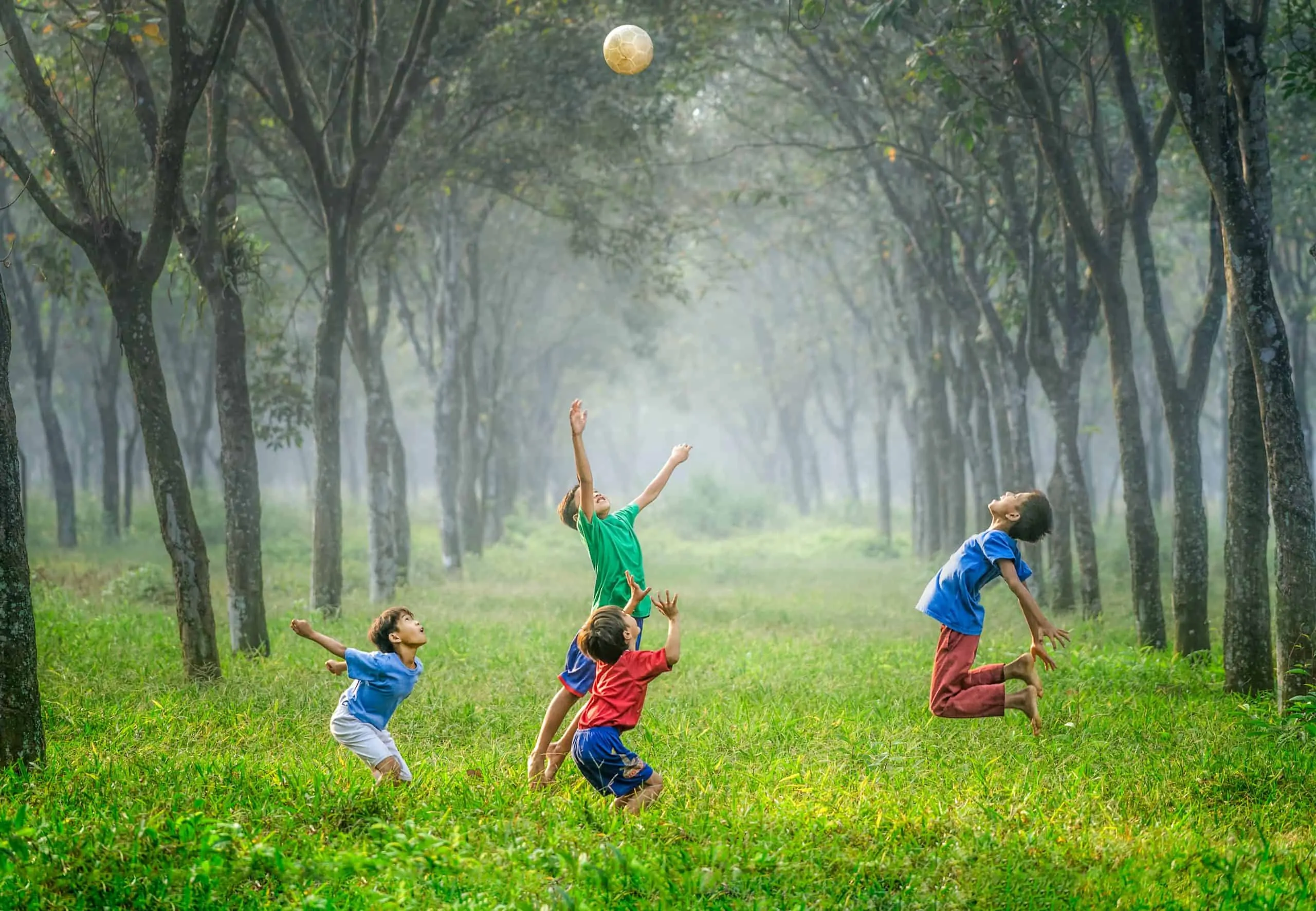Development is a sequential progression of growth. When our babies first start to move around, they first learn to lift their head, roll, sit, crawl, stand, and walk. The development gradually progresses top-down, meaning head to toe, and the center of the body outward, tummy to limbs. The big muscles are trunk, shoulders, and hips, and these muscles develop first to provide a foundation for our small muscles to build. The big muscles need to be stable and coordinated to set a solid base for little muscles to develop. Jumping, running, climbing, catching, and throwing are skills that come before a preschooler is ready to complete fine-motor tasks such as drawing and cutting with scissors.
Children acquire fine-motor skills more quickly and successfully when they have a strong foundation in gross motor skills. Shoulder strength, coordination, and stability will support the forearm, wrist, and hand, development in children. If a child has a base from which to work, the use of hands and fingers will develop naturally, enjoyably, and skillfully. The child will be ready to progress with the ability to use hands and fingers and complete higher-level hand-eye coordination tasks.
A weak gross motor foundation will affect a child’s fine motor skill development. When the trunk and shoulder muscles tire, a child quickly loses interest and becomes frustrated in desktop activities. Solid shoulder control and trunk stability will provide the necessary stamina and endurance to sustain the use of hands and fingers for tasks such as building with blocks, turning pages in a book, and coloring. Focusing only on the use of hands and fingers without addressing the strengthening and coordination of the core, upper body, and shoulder muscles will cause fatigue, irritation, and impatience during manual school responsibilities.
Naturally, our toddlers and preschoolers are programmed to enjoy a multitude of physical activities that contribute to their growth. Exploring playground equipment, riding a tricycle, and rearranging small furniture around the house is an enjoyable and constructive developmental experience. Spontaneous children who investigate their surroundings have the benefit of their sedentary peers. When babies and toddlers move around frequently, rearrange, and experiment with the world around them, they navigate through obstacles and learn new skills.
Youngsters who are mostly observers throughout their early years are often cautious and carefully calculate their movement risks. They will need additional encouragement and practice to feel comfortable to perform some physical tasks that seem effortless to their classmates. With patience and kindness, most children will eventually enjoy gross motor activities. It is essential to nurture physical competencies in the young child, so she or he feels confident and positive about themselves throughout their school life.
Some children are born with challenging muscular or coordination conditions or demonstrate temperament characteristics that need to be addressed by specialists. Specific diagnoses require specialized therapeutic intervention to improve the motor function of a child. However, some children might refuse to play or complain after physical activities. If this persists, it is best to talk to your pediatrician.
It is beneficial to provide abundant movement opportunities for young children. Toddlers and preschoolers, especially enjoy movement driven learning. Some children might need extra support to nurture the development of essential gross motor skills, and early childhood is the perfect time to make sure our children have plenty of daily movement time.
Research suggests that children between 3 and 5 years old need at least 3 hours of physical activity per day. Our preschoolers continue to work on perfecting their gross motor skills. They are not yet proficient and continue to develop more complex physical movements daily.
Preschoolers need a combination of structured and unstructured movement opportunities to enhance their strength, coordination, and endurance.
Unstructured physical time would include exploring playground equipment, such as running around, climbing, swinging, and going down the slide. The indoor motor activities consist of playing, moving, and carrying around large items such as chairs, boxes, and blocks that require the use of both arms to pick up. Pushing and pulling with both arms and using both hands to carry large objects is vital. Squatting down, reaching, crawling, dancing, and walking up and down the stairs are other examples of unstructured gross motor activities that kids love to practice at home.

The structured physical play would include games, organized sports, obstacle courses, and specific skill practice drills inside or outside. Some examples of structured gross motor activities would include;
Games; bean bag and balloon toss, animal walks (walk like a bear, leap like a frog), hopscotch, races, Follow the Leader, and Duck Duck Goose.
Organized preschool sports such as soccer, t-ball, cheer-leading, bowling, floor hockey, and football.
Obstacle courses– navigating through a variety of obstacles, and changing body positions is the key to physical confidence.
-Run, drop, roll
-Crawl through the tunnel, jump over hurdles, walk on a balance beam
-Crawl under, climb over an obstacle, walk on uneven surfaces, carry large objects with both arms
Specific skill practice
-throw, catch, kick, and roll a ball
-jump, run, march, hop, climb, balance on one leg, skip, gallop
-ride tricycle and scooter

Conclusion
Building and mastering gross motor skills in early childhood will have a significant favorable influence on children’s confidence, learning, and independence. Acquiring a robust gross motor foundation will provide children with academic readiness for more complex learning tasks. Children will quickly pursue and progress with higher-level hand-eye coordination tasks such as grasping pencil and writing. Little hands and fingers will be ready to take on increasing school demands and will develop naturally and enjoyably.
If you like this post, please share it with a friend!


0 Comments